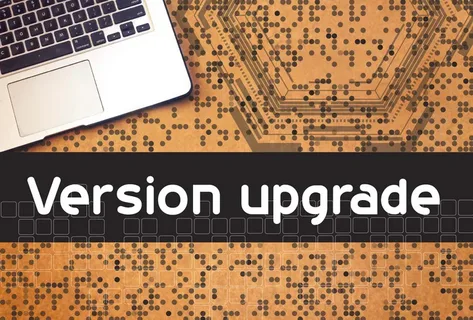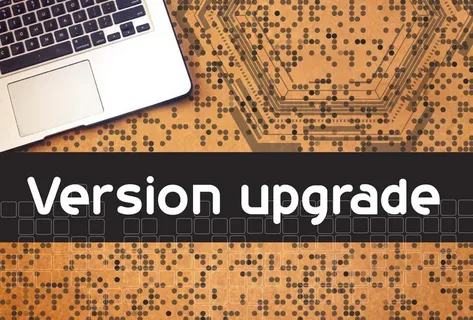Version Upgrade: Navigating the Transition to New Software Versions
A version upgrade is a significant step in the lifecycle of software, where a user or organization moves from an older version to a newer one, often bringing enhanced features, better performance, bug fixes, and security improvements. While version upgrades are essential for keeping software up-to-date, they can also introduce challenges that need careful planning and execution.
In this article, we explore what a version upgrade is, why it’s important, the benefits and risks associated with it, and the best practices for ensuring a smooth transition to the latest version of your software.
What is a Version Upgrade?
A version upgrade refers to the process of updating software to a newer version within the same product family. This type of upgrade typically introduces significant changes, such as new features, improvements in user interface (UI) and user experience (UX), enhancements to security, and performance optimizations.
Version upgrades are different from patches or minor updates, which focus primarily on fixing bugs, adding small features, or addressing security vulnerabilities. A version upgrade, on the other hand, is often a more substantial update that may include:
- New functionalities and capabilities
- Changes to the underlying architecture or framework
- Significant UI/UX redesigns
- Improved compatibility with new technologies or platforms
- Optimized performance or scalability
These upgrades are often part of the major release cycle of software and are typically denoted by an increment in the version number (e.g., moving from version 1.x to version 2.0).
Why Are Version Upgrades Important?
Version upgrades are essential for several reasons, ranging from security improvements to enhanced functionality. Here are some of the primary reasons why upgrading to a new version is critical:
1. Improved Security
New versions often address security vulnerabilities that were discovered in earlier releases. As software evolves, security threats become more sophisticated. By upgrading to the latest version, users ensure that their systems are protected by the latest patches and security enhancements, reducing the risk of data breaches, exploits, and cyberattacks.
2. Access to New Features and Functionality
A version upgrade often introduces new features that can provide greater productivity, efficiency, and innovation. This could include improved workflows, new integrations, automation features, or additional tools that enhance the overall user experience and meet changing business requirements.
For example, a new version of a CRM software might introduce artificial intelligence (AI) features to help analyze customer data and make better sales predictions.
3. Performance Enhancements
New software versions often come with optimized code, better memory management, faster processing speeds, and other improvements that make the system run more efficiently. These performance enhancements help businesses handle more users, processes, or data, contributing to better overall system stability and scalability.
4. Bug Fixes
Software bugs are inevitable, but they can significantly disrupt the user experience and workflow. A version upgrade generally resolves known issues from previous versions, ensuring a more stable and reliable application. This might include fixing crashes, glitches, or other usability problems that could impact productivity.

5. Better Compatibility
As technology advances, older software versions may become incompatible with newer operating systems, devices, or other software. A version upgrade ensures compatibility with the latest hardware, operating systems, and third-party tools, keeping the software relevant and functional in evolving technology environments.
6. Support and Maintenance
Software vendors usually provide active support for only the latest versions of their products. As older versions approach their End-of-Support (EOS) date, organizations using them may find themselves without essential bug fixes, security patches, or customer support. Upgrading ensures that organizations continue to receive timely help and updates, reducing the risks associated with using unsupported versions.
Challenges of Version Upgrades
While version upgrades offer many advantages, they can also present challenges that organizations need to consider before committing to the process. Some of these challenges include:
1. Compatibility Issues
New software versions may not be fully compatible with older hardware, other software systems, or integrations. For example, a version upgrade to a new database management system might require changes to the existing infrastructure or the way other software applications interact with it. These compatibility issues can cause disruptions or require significant reconfiguration efforts.
2. Learning Curve
Upgrading to a new version can introduce changes to the user interface (UI) or functionality, which may require additional training or adjustment periods for users. The learning curve associated with understanding new features and workflows can temporarily reduce productivity until users become accustomed to the upgraded version.
3. Potential Downtime
Although vendors strive to make version upgrades as seamless as possible, there is always the possibility of downtime or technical issues during the upgrade process. This can be particularly disruptive for mission-critical systems or services that rely on continuous availability. Planning the upgrade during low-traffic times or setting up temporary workarounds can help mitigate this issue.
4. Data Migration
In some cases, version upgrades require migrating data or configurations from the old version to the new one. This process can be complex and time-consuming, especially when large amounts of data are involved. Ensuring data integrity during migration and minimizing data loss or corruption is essential to a successful upgrade.
5. Cost and Resource Allocation
Upgrading to a new version can require significant resources, both in terms of time and financial investment. Businesses may need to allocate budget for training, testing, infrastructure updates, and professional services to assist with the upgrade. In some cases, the cost of upgrading might outweigh the benefits if the organization is on a tight budget or if the upgrade doesn’t deliver enough value to justify the investment.
Best Practices for a Successful Version Upgrade
To maximize the benefits of a version upgrade and minimize associated risks, it’s important to follow best practices throughout the process. Here are some strategies to ensure a smooth transition:
1. Conduct a Thorough Assessment
Before starting the upgrade process, assess the need for the version upgrade. Review the release notes, new features, security improvements, and bug fixes included in the new version. Evaluate whether the new version addresses your specific requirements and will provide a good return on investment.
2. Back Up Your Data
One of the most critical steps in any upgrade process is ensuring that all data is properly backed up. Backing up all configurations, databases, and files associated with the existing version ensures that you can recover your system in case the upgrade fails or encounters issues. Ideally, perform a full backup before beginning the upgrade and ensure that the backup is stored securely.
3. Test the Upgrade in a Staging Environment
Testing the upgrade in a non-production or staging environment is essential to identify potential issues before deploying it to live systems. This allows you to simulate the upgrade process, evaluate the performance of the new version, and test the compatibility of the new version with your existing infrastructure, tools, and workflows. If issues are identified during testing, they can be resolved before the upgrade is rolled out to production.
4. Communicate with Stakeholders
Upgrade projects should involve clear communication with all relevant stakeholders, including IT teams, department heads, and end users. Communicate the timeline for the upgrade, any changes in functionality, and the expected benefits. Preparing users for the new version and providing adequate training can help mitigate the learning curve and increase user adoption.
5. Plan for Downtime or Reduced Performance
While you may strive for minimal downtime, it’s crucial to plan for some level of disruption during the upgrade. Schedule the upgrade during low-traffic hours to minimize the impact on users and business operations. Inform all affected parties of the planned maintenance window, and ensure that temporary workarounds or contingency plans are in place if the upgrade takes longer than expected.
6. Monitor the Upgrade Post-Deployment
After the upgrade is completed, monitor the system for any unexpected issues, such as performance degradation, compatibility problems, or new bugs. Perform thorough testing to verify that everything is working as expected and that users can access the new features. Be ready to address any issues quickly to avoid extended disruptions.
7. Provide Ongoing Support
Even after the version upgrade is complete, ongoing support is essential. Offer users continued training on the new version, provide help desk support for any issues they encounter, and maintain regular system monitoring. Encourage feedback from users to identify any challenges they face with the new version, and be prepared to release follow-up patches or fixes as needed.
Conclusion
Version upgrades are an integral part of keeping software up-to-date, secure, and functional. While they come with many benefits, such as new features, improved performance, and enhanced security, they also pose challenges that require careful planning and execution.
By following best practices—such as thorough testing, user communication, data backups, and post-deployment monitoring—you can ensure a smooth and successful upgrade process. Ultimately, a well-managed version upgrade can provide significant advantages for both users and organizations, allowing them to take full advantage of the latest technology while maintaining system stability and performance.

